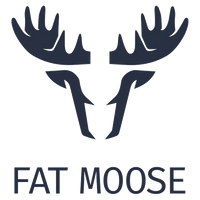3 of Europe's Hardest Ultra Running Races
Ultra running is a thrilling sport that pushes an athlete’s physical and mental endurance to the limits. It is one of the most extreme sports in the whole of Europe, and its history can be traced as far back as a century.
In modern times, ultra races have been contested in two race categories, either involving running over set distances of -50 kilometres, 100 kilometres- or set times of -6 hours, 12 hours, days, or even months. 50 miles and 100 miles are also popular distances.
Ultra races can be run on trails, tracks, and roads, but for a race to be termed as hard, it must include severe challenges such as unbelievable distances, harsh temperatures, unfavourable weather conditions, rough terrains, steep ascents, and even steeper descents.
Therefore, becoming an ultra runner takes years of self-sacrificing training, discipline, and preparation. In addition, ultra runners need to be able to sleep in the strangest of places, such as mountaintops or huts on glaciers far from the comfort of their homes. They also need to eat light food, and this is because they can't carry much since they have to run carrying their food and water supplies during competitions.
These vicious beasts are reserved for only the bravest, most daring, and adventurous of runners who wouldn't mind putting their minds and bodies to the test. Despite competitions becoming more gruelling as years go by, thousands of ultra runners continue to participate in several ultra races around Europe.
Let's take a look at 3 of what are considered the most challenging ultra-running races in Europe.
Ultra-Trail du Mont-Blanc (UTMB)
The Ultra-trail du mont-blanc (UTMB) is presumably one of Europe's most extreme and prestigious ultra races. This race takes place once a year on either the last weekend of August or the first weekend of September in the mountain resort of Chamonix.
Following the Tour du Mont Blanc route through France, Italy, and Switzerland, it spans a distance of roughly 171 kilometres, a total elevation gain of around 10,040 meters, and is run counterclockwise.

Over 2,500 athletes descend on the alps each year to take on this brutal race, making it one of the largest in Europe. The highlight of a seven-day festival based around Chamonix in France, the UTMB, is a big deal.
This competition attracts some of the best ultra runners around the world who come to compete fiercely for the UTMB title. To qualify to compete, a racer must have an accumulation of enough race points from participating in other ultramarathons within a two-year period.
Spartathlon
The Spartathlon is a 246-kilometre ultra race that is usually held around late September in Greece. It is run on the historic route between Athens and Sparti, the modern town on the site of ancient Sparta.
This ultra race is based on the run of Pheidippides, who is said to have run from Athens to Sparta in one day and a half in search of help against the Persians. It began as a competition in 1983, and a year after, five Royal Air Force officers attempted the course.
The Spartathlon is a very demanding race, not only because of the distance but also of the cut-off requirements, mountainous terrain, and weather conditions. Runners are expected to complete this 246-kilometre run in 36 hours. This is almost the same as running six marathons at a stretch.
Seventy-five checkpoints are situated throughout the race to provide food and water supplies and to disqualify runners who don't meet the time cut-offs or for safety reasons.
Tor Des Géants
Tor des Géants, which translates to Tour of Giants, is an endurance trail race that takes place in September in the Aosta Valley, Italy. Physical and psychological strengths, as well as rigid training, are the requirements for this race.
This race spans a total length of 330 kilometres, taking runners into severe altitude trails of up to 3,300 meters and elevations that reach 24,000 meters which must be completed in less than 150 hours.
Given the significant elevation variations throughout the race, weather can be very challenging for runners. They may experience sun, rain, wind, or even snow. Because of the difficulty of this race, many runners fail to complete it, making it one of Europe’s hardest.
Conclusion
After all that has been said, it is crystal clear that ultra-running races are not for the faint-hearted. Becoming an ultra runner isn't a day’s job; it takes years of diligent mental and physical training and sacrifices to take on these monstrous feats. To many, it may seem impossible but glory only awaits those who are willing.
At Fat Moose, we don’t have running wear, but we do have “after race” clothing and comfy wear. So, if you are already an ultra runner or believe you have what it takes to become one, we have just the perfect clothes to keep you comfortable and warm right after you finish your race.


